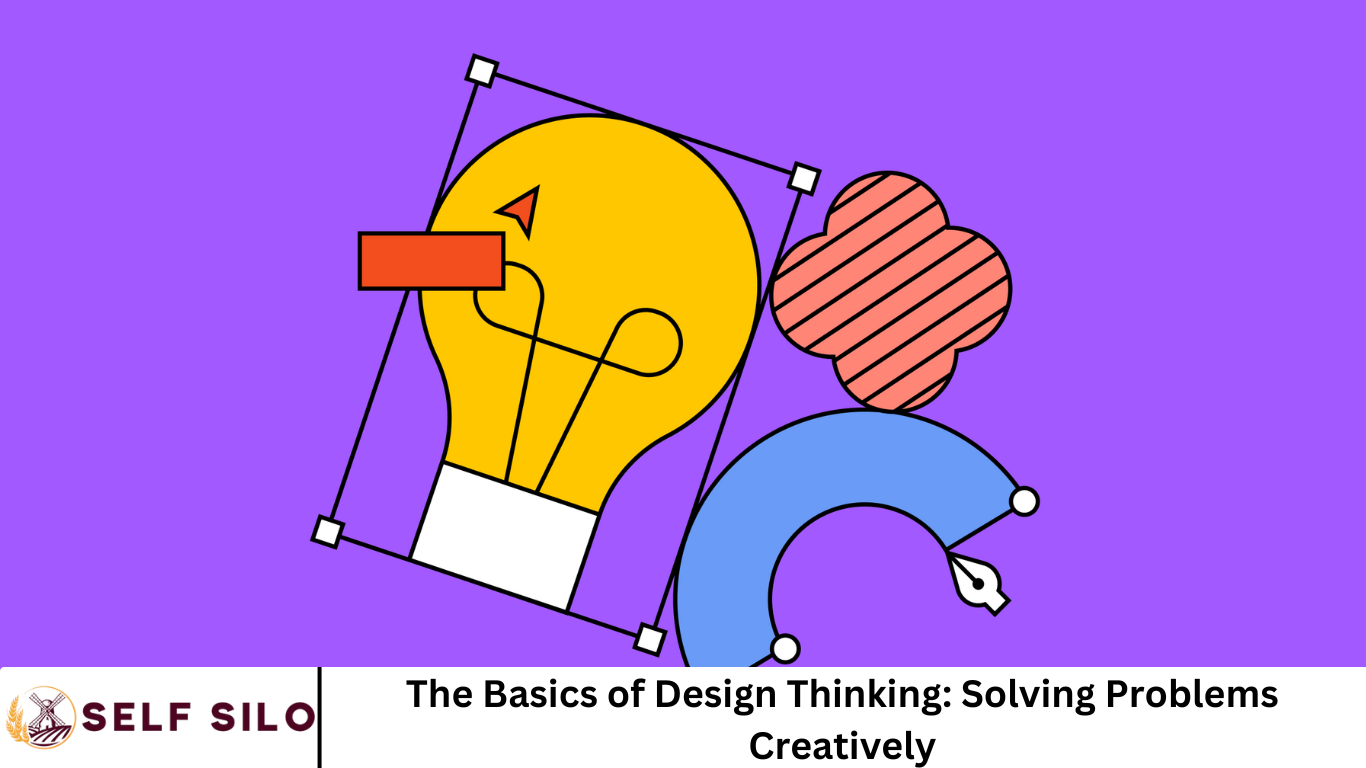Rapidly changing world, the ability to solve problems creatively is more critical than ever. Businesses, nonprofits, governments, and startups all face the challenge of staying innovative while solving complex, human-centered problems. This is where Design Thinking comes into play.
Design thinking is a structured yet flexible problem-solving methodology that prioritizes empathy, experimentation, and iteration. It enables teams to generate innovative solutions that align with real human needs.
We’ll cover the basics of design thinking, why it’s essential for innovation, and how to apply it in a practical, actionable way. Whether you’re new to the concept or looking to sharpen your approach, this guide will walk you through what design thinking is, how it works, and how it can help your team solve problems creatively.
More Read: Gamified Learning in 2025: Boosting Engagement and Retention
What Is Design Thinking?
Design thinking is a user-centric approach to innovation and problem-solving. It’s a framework originally derived from the way designers think, combining what is desirable from a human point of view with what is technologically feasible and economically viable.
At its core, design thinking helps teams understand their users, redefine problems, challenge assumptions, and develop creative solutions that can be prototyped and tested.
Key Characteristics of Design Thinking:
- Human-centered: Focused on real people’s needs and experiences.
- Iterative: Encourages cycles of prototyping, testing, and refining.
- Collaborative: Cross-functional teams work together to generate diverse ideas.
- Solution-focused: Aims to find the best outcome rather than just analyze problems.
- Experimental: Embraces testing and learning from failure.
Why Design Thinking Matters
In the digital age, traditional problem-solving often falls short when addressing the complex, non-linear challenges businesses face. Design thinking offers a creative toolkit to rethink the customer experience, improve internal processes, or innovate entirely new products and services.
Benefits of Design Thinking:
- Drives Innovation: Unlocks creativity across teams.
- Reduces Risk: Testing ideas early avoids costly failures later.
- Boosts Customer Satisfaction: Products and services are shaped by real user feedback.
- Improves Collaboration: Teams work better together by aligning around user needs.
- Accelerates Time to Market: Rapid prototyping and feedback loops streamline development.
The 5 Stages of Design Thinking
The design thinking process is often illustrated as a five-stage model developed by the Hasso Plattner Institute of Design (d.school) at Stanford. While the process is not strictly linear, these stages offer a roadmap for teams to navigate creative problem-solving.
1. Empathize – Understand the User
This first stage is all about stepping into the shoes of your users. You gather insights into their experiences, motivations, and pain points through research methods such as:
- User interviews
- Observational studies
- Surveys
- Empathy maps
The goal is to develop a deep, empathetic understanding of the problem you’re trying to solve—not just from a technical or business standpoint, but from a human perspective.
Tip: Avoid assumptions. Let real user data guide your thinking.
2. Define – Frame the Problem
Once you’ve gathered insights, the next step is to synthesize that information into a clear, actionable problem statement. This is also called the Point of View (POV) statement.
A good problem statement focuses on the user, not the business, and is framed as a challenge that invites creative solutions.
Example:
❌ We need to increase mobile app downloads.
✅ Busy professionals need a quicker way to track their health goals while on the go.
3. Ideate – Generate Creative Solutions
With a clear understanding of the user and a well-defined problem, it’s time to brainstorm as many ideas as possible. This stage is about quantity over quality—encouraging wild ideas and suspending judgment.
Tools that help during ideation include:
- Brainstorming sessions
- Mind mapping
- SCAMPER technique
- “How Might We” questions
Goal: Explore a wide range of possible solutions and select a few promising ideas to take forward.
4. Prototype – Build to Think
Prototyping turns abstract ideas into tangible products. These can be anything from simple paper sketches or storyboards to digital mockups or interactive models.
Prototypes are not meant to be perfect—they’re quick and inexpensive representations of ideas that allow teams to explore viability and gather feedback.
Common prototype formats:
- Wireframes
- Clickable app demos
- Physical mockups
- Role-playing scenarios
5. Test – Learn and Improve
In the testing phase, you present your prototype to real users and observe how they interact with it. The goal is to learn what works, what doesn’t, and why.
Be prepared to go back to earlier stages, revise your solution, and improve it. Design thinking is inherently non-linear—it often involves looping through multiple rounds of prototyping and testing.
Real-World Applications of Design Thinking
Design thinking is used across many industries to drive transformation and innovation. Here are a few compelling examples:
1. Healthcare
Hospitals like the Mayo Clinic have used design thinking to redesign patient experiences, from check-in processes to waiting room layouts—leading to greater satisfaction and efficiency.
2. Technology
Companies like IBM and Google use design thinking to align teams around user needs and develop software solutions faster and more effectively.
3. Education
Schools and universities incorporate design thinking to foster problem-solving skills and improve curriculum design.
4. Government
Public institutions use design thinking to better understand citizen needs, streamline services, and build trust in public systems.
Design Thinking vs. Traditional Problem Solving
| Aspect | Design Thinking | Traditional Approach |
|---|---|---|
| Focus | Human-centered | Problem-centered |
| Process | Iterative | Linear |
| Risk | Encourages failure early | Avoids failure |
| Collaboration | Cross-functional teams | Departmental silos |
| Outcome | Innovative solutions | Incremental improvements |
How to Start Using Design Thinking in Your Organization
You don’t need to be a designer or work at a tech company to use design thinking. Here’s how to begin integrating it into your team’s workflow:
1. Start with a Small Project
Choose a real-world problem affecting your users and run a mini design sprint. This builds confidence and shows quick wins.
2. Encourage a Culture of Curiosity
Ask open-ended questions, listen actively, and reward experimentation. Innovation thrives in environments where it’s safe to fail.
3. Use Design Thinking Workshops
Run design thinking workshops that guide teams through each stage. Include activities like empathy interviews, ideation games, and rapid prototyping.
4. Train and Upskill Teams
Invest in design thinking training—online courses, boot camps, or internal programs—to build capability across roles.
Sample Design Thinking Workshop Agenda
Here’s a sample half-day agenda you can use to introduce your team to the design thinking process:
| Time | Activity |
|---|---|
| 9:00 AM – 9:30 AM | Introduction & Design Thinking Overview |
| 9:30 AM – 10:00 AM | Empathy Interviews (paired activity) |
| 10:00 AM – 10:30 AM | Define User Needs & Problem Statements |
| 10:30 AM – 11:15 AM | Ideation Session (Brainstorm + Voting) |
| 11:15 AM – 12:00 PM | Rapid Prototyping |
| 12:00 PM – 12:30 PM | User Feedback & Next Steps |
Common Myths About Design Thinking
Myth 1: Design thinking is only for designers.
Truth: It’s a universal methodology that works across roles, from marketing to engineering to HR.
Myth 2: It’s too time-consuming.
Truth: Design thinking speeds up decision-making by reducing costly trial and error later.
Myth 3: It’s just brainstorming.
Truth: While ideation is a part of it, design thinking is a structured end-to-end approach from problem identification to implementation.
Frequently Asked Question
What is design thinking in simple terms?
Design thinking is a creative problem-solving approach that puts people first. It helps teams understand users’ needs, define clear problems, brainstorm ideas, build prototypes, and test solutions. It’s all about finding practical, innovative answers to real human challenges.
Why is design thinking important for creative problem-solving?
Design thinking encourages out-of-the-box thinking, deep empathy, and rapid experimentation. Instead of jumping to conclusions or relying on assumptions, it helps teams develop user-centered solutions that are both innovative and effective.
What are the five stages of the design thinking process?
The five core stages of design thinking are:
- Empathize – Understand user needs
- Define – Frame the core problem
- Ideate – Generate creative ideas
- Prototype – Build low-fidelity models
- Test – Get user feedback and improve
These stages are flexible and often repeated in cycles.
Who can use design thinking?
Design thinking is not just for designers. It’s used by professionals in business, education, healthcare, government, and beyond. Anyone aiming to solve complex, human-centered problems creatively can benefit from using design thinking principles.
What types of problems is design thinking best suited for?
Design thinking is especially effective for:
- Complex problems with no clear solutions
- Challenges involving human behavior and emotions
- Product and service innovation
- Improving user experiences
- Reimagining internal processes or systems
How is design thinking different from traditional problem-solving?
Traditional approaches are often linear and focus on technical or business goals. Design thinking is iterative and human-centered, encouraging creativity, collaboration, and early testing to reduce risk and improve outcomes.
Can design thinking be used in small businesses or startups?
Absolutely! Design thinking is a powerful tool for startups and small businesses. It helps teams stay agile, customer-focused, and innovative—without requiring large budgets or complex resources.
Conclusion
Design thinking offers more than just a way to design better products—it’s a mindset for tackling challenges in a human-centered, innovative way. Whether you’re improving an internal process, reimagining a service, or launching a new product, the design thinking framework gives you the tools to navigate ambiguity and discover truly meaningful solutions. By embracing the basics of design thinking, your team can solve problems more creatively, align better with customer needs, and stay ahead in an ever-evolving marketplace.


